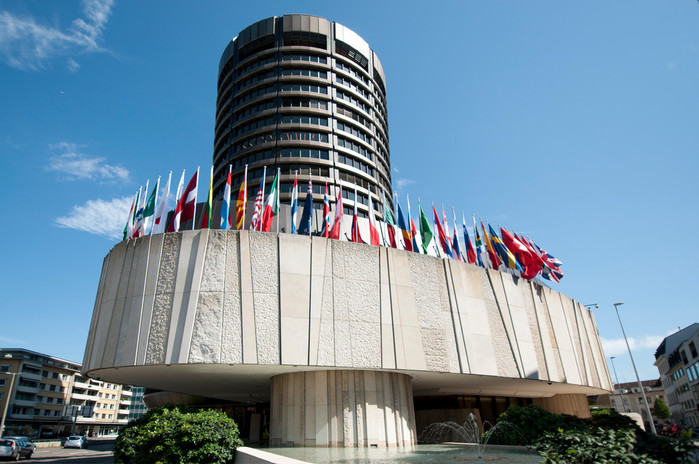
by Katiana Resovich | Jan 3, 2020 | Financial Globalization, Research
From Professor Maurice Obstfeld’s Keynote speech at the Italian Economic Association Annual Meeting, Palermo, Italy, October 24, 2019:
“The bi-directional connections between nationalism and globalization – with globalization arguably spurring a nationalistic domestic politics and nationalism threatening policy shifts that compromise global economic integration – justify a focus on economic nationalism (de Bolle and Zettelmeyer 2019). In principle, economic policies aiming to further purely domestic objectives can be perfectly consistent with a high degree of global economic integration and cooperation. Thus, my key questions today will concern why this “divine coincidence” seems often difficult to achieve in practice, and why, when difficulties arise, global integration can be an early victim. While my goal is to get beyond quotidian observations about the “winners and losers from trade,” however essential these are as a starting point, you will see that my reflections add up to much less than a full and rigorous account. Still, it seems useful at least to put the current disruptions in their historical context – one objective being to illustrate the continuity with past developments and thereby offer hope that public action has some scope to address the current malaise.”
Read the full address on Professor Obstfeld’s website HERE.

by Katiana Resovich | Jan 3, 2020 | Financial Globalization, Research
Clausen Faculty Professor Maurice Obstfeld writes in his upcoming article in the Italian Journal of Economics, 2020:
“While the Global Financial Crisis of 2008-2009 was not a catastrophe on the order of World War I, there is a broad similarity in the sequelae to both of these events – a failed attempt to return to pre-trauma normalcy, followed by a process of international economic disintegration in the face of changed geopolitical realities. This similarity is history rhyming rather than repeating (in the phrase commonly attributed to Mark Twain), but it does raise three questions about possible cycles in globalization (also a theme of O’Rourke 2018):
- Does globalization inherently foster dynamics that eventually lead to political backlash?
- If so, are these dynamics inevitable, or can complementary economic policies nurture a stable globalization?
- And finally, since policies are endogenous, when are domestic policies that complement and support globalization likely to arise?
Obviously, these are very difficult questions to answer – all I will do here is offer some observations and guesses. Answers that are more complete would have to rely on rigorous and systematic analysis based on insights from a range of social sciences, not just economics.”
Access the full article on Prof. Obstfeld’s website HERE.

by ClausenCenter | May 6, 2019 | by Emi Nakamura and Jon Steinsson, Financial Globalization, Grant, Research
by Emi Nakamura and Jon Steinsson
There remains limited empirical evidence on the real consequences of fixed versus floating exchange rate regimes, despite the importance of the question, both in terms of developing open economy macroeconomics models, and in determining appropriate macroeconomic policies. A benchmark reference in this literature is Baxter and Stockman (1989), who conclude that the exchange rate arrangement doesn’t matter. This evidence is deeply unsatisfying. The main empirical exercise is to compare pre-1973 (fixed exchange rate) to 1973-1986 output volatility for a set of countries. However, many other factors changed between the pre and post period aside from the exchange rate regime, making it difficult to know whether the exchange rate regime was the cause of any difference between the two periods.
A more recent and more convincing reference is Broda (2006), who studies the effect of “terms of trade” shocks for countries with fixed versus floating exchange rates. A basic challenge here is that the terms of trade depend mechanically on the exchange rate. Broda focuses on small countries for whom he argues the terms of trade are exogenous. We can show, however, using our identification approach (more on this below) that the assumption of an exogenous terms of trade is violated. Rose (2011) concludes his recent survey on this topic by stating that “similar countries choose radically different exchange rate regimes without substantive consequences for macroeconomic outcomes like output growth and inflation.”
We believe these issues are ripe for re-investigation, given the limitations of the empirical methods that have been used in previous research. propose a new identification approach to study these issues below and present some preliminary results.


by ClausenCenter | May 6, 2019 | by Barry Eichengreen, Financial Globalization, Grant, Research
by Barry Eichengreen
There is no official Bank for International Settlements view of feasible and desirable exchange rate and international monetary arrangements, so far as can be gleaned from documents and publications of the institution. Butit is possible to discern the outlines of an unofficial, unstated institutional consensus. Its most prominent elements are the proposition that lax credit conditions create incentives for risk taking that can threaten systemic stability; that the instruments and institutions that convey capital flows across borders are important for understanding financial-stability risks; and that there is a role for macro-prudential policy in restraining the excesses that heighten these risks.
In this project I will trace the events, personalities and institutional dynamics responsible for the development of this view. I will do so through the lens of the Bank’s Annual Reports, which provide a distillation of the thinking of staff and management. I will see characterize the evolution of those analyses, focusing on the post-Bretton Woods period that saw the emergence of the modern BIS and is most directly relevant to today. I plan on supplementing my discussion with material from the BIS archives and secondary sources.


by ClausenCenter | May 6, 2019 | by Ross Levine, Financial Globalization, Grant, Research
by Ross Levine

It is crucial to understand the impact of the geographic diversification of a bank’s assets on its funding costs because (1) the costs to banks of raising capital, issuing other securities, and attracting deposits affect the allocation and pricing of bank credit, which are central to economic growth and the distribution of income and (2) banks expand geographically for many reasons, raising questions about the impact of such expansions on funding costs and bank lending. Existing research, however, offers differing perspectives on whether the geographic diversification of bank branches and subsidiaries increases, decreases, or has no effect on the costs to banks of raising deposits and issuing securities. This research will provide the first empirical evaluation of the impact of geographic expansion on the costs of a bank’s interest-bearing liabilities, which account for about 90 percent of bank liabilities. A crucial methodological contribution is the development of an empirical strategy to identify the impact of an exogenous source of variation in the geographic expansion of a bank on its funding costs.

by ClausenCenter | Jul 1, 2018 | by Emily Eisner, Fellowship, Financial Globalization, Research
by Emily Eisner
This project aims to understand the role of value-at-risk (VaR) constraints and bank risk-taking behavior in determining entry and exit into global asset markets. The model informs the aggregate risk of the global financial markets and informs macroeconomic dynamics that depend on financial frictions in intermediation. The project develops an open economy model of financial markets based on the closed economy model in Coimbra and Rey (2017). In the extended model, financial intermediaries, which are heterogeneous in their VaR constraint as in Coimbra and Rey (2017), have an opportunity to invest in foreign assets. The model predicts the risk-taking composition and international asset composition of financial intermediaries under different interest rate environments.










